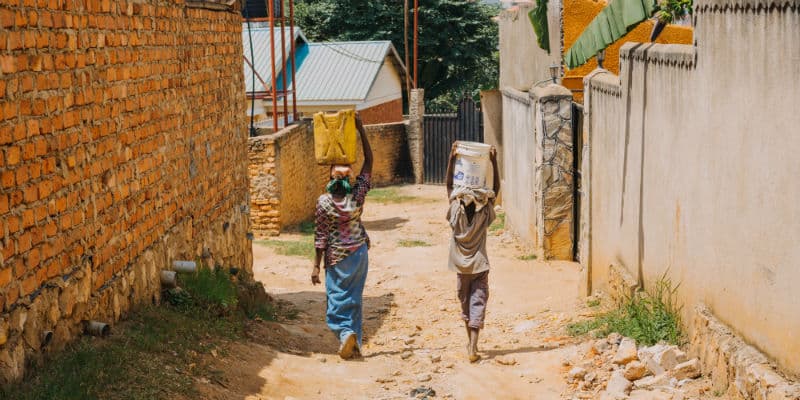The first UN Sustainable Development Goal is to “end poverty in all its forms everywhere.” Although the goal is ambitious, unfortunately it’s also insufficient in helping people lead safe and secure lives—something the spread of COVID-19 has made glaringly more apparent.
Before COVID-19 brought the global economy to a halt, more than 3.4 billion people who lived on less than $5.50 a day—technically not living in extreme poverty—struggled immensely to meet their basic needs. Often lacking access to safety nets and welfare programs, the spread of the virus has only made their lives more difficult, and could push as many as 500 million people back into poverty. Unfortunately, the virus won’t be the last crisis to expose how vulnerable billions of people remain despite not technically living in “extreme poverty.” For those who continue to struggle, natural disasters, financial crises, a death in the family, or even a hospital visit can be detrimental.
It’s clear that ending poverty does not go far enough to prevent human suffering—but the unfortunate truth is that the global community has fallen short even in this regard. In Moving Out of Poverty, a large-scale 2009 World Bank study, researchers interviewed more than 60,000 people living in 500 communities in 15 different countries to understand how they escaped poverty. Only 0.3% of people credited NGO activities while 71% of people assigned their progress to economic transformation such as jobs, new income sources, and new businesses.
Our research supports these findings, and suggests a fundamentally different approach to helping people get ahead in life: creating shared prosperity through market-creating innovations.
A better goal – Creating shared prosperity
Prosperity breeds independence and an ability to more easily weather economic storms caused by things like COVID-19. In response to the epidemic, wealthy economies have been able to pass economic stimulus packages that leverage their existing infrastructure and social services. Though wealthier communities have undoubtedly been affected, individuals can at least navigate the resources and systems already in place to get through these turbulent times.
In our research studying economic growth over the past few centuries, we’ve discovered that virtually every country that has achieved such economic resilience—from the United States to South Korea—has done so not by primarily focusing on eradicating poverty, but by focusing on creating prosperity. To that end, market-creating innovations are the critical missing piece in the quest to create robust growth.
Market-creating innovations transform complicated and expensive products into simple and affordable ones so many more people who previously lacked access, also known as nonconsumers, can buy them. As market-creating innovators serve a growing number of nonconsumers, three things happen. First, they create new jobs to make, market, distribute, and sell the products to the vast new market. Second, the organizations generate profits that are taxed by governments and used to help build infrastructure and develop institutions. Third, as other innovators join the new market and see firsthand the benefits of targeting nonconsumers, a culture of innovation and entrepreneurship ensues, creating a virtuous cycle that leads to more innovation. History has shown that this process not only eradicated poverty in many of today’s wealthy countries, but it also helped them develop a foundation for widespread prosperity.
In the mid-1800s, for instance, the United States was not a prosperous country. Not unlike many poor countries today, in the tenements of large cities, sewage spewed out onto alleyways, garbage was dumped outside apartments and left to rot, and horse manure lined the streets. Many women walked more than 100 miles annually carrying tons of water. And the US government, now a symbol of democracy and transparency worldwide, was as corrupt as many of today’s low-income economies. But it was under these dire circumstances that entrepreneurs such as Isaac Singer, Cyrus McCormick, Henry Ford, and many other market-creating innovators created new markets that served America’s vast nonconsuming population.
For instance, Isaac Singer’s I.M. Singer & Co. was responsible for transforming complicated and expensive sewing machines into simple and affordable products so millions of people could access them. In order to do this, Singer developed new business models including offering credit and training to customers, investing in infrastructure to better distribute the products, and building an extensive sales network that included branch offices. At one point, Singer had directly created tens of thousands of jobs to manufacture close to one million machines annually. As more people became employed, their incomes increased and they contributed to America’s treasury. Understandably, it takes much more than one Singer to create prosperity in a country, but the principles of targeting nonconsumption with market-creating innovations is a great place to start.
Objectively, everyone can agree that COVID-19 is having a devastating impact on the world. However, if any good is to come from it, let it be that it causes the global development community to revisit the elusive goal of eradicating poverty. It’s time for an upgrade. Let’s create prosperity instead.
For more, see:
With development pushed back 30 years, these innovations are critical for recovery



